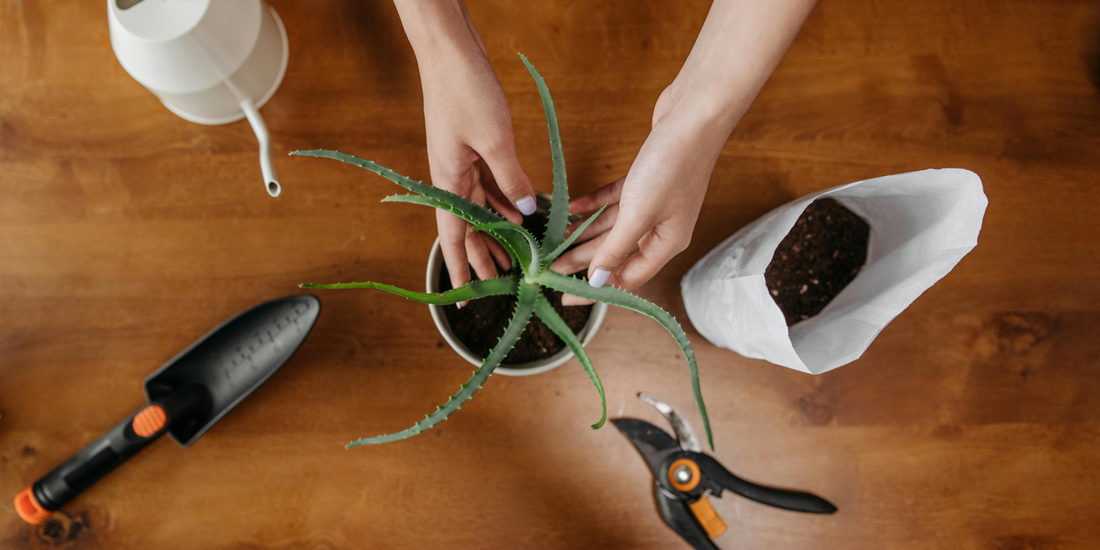
How to Use Grow Lights Without Overheating Your Room
Share
Indoor gardening has become a popular way for plant lovers to enjoy lush greenery year-round. But while grow lights provide the necessary spectrum for photosynthesis, they also generate heat. If not managed properly, grow lights can raise room temperature, stress plants, and make your living space uncomfortable. The good news is, with the right strategies, you can use grow lights effectively without overheating your room.
In this article, we’ll explore practical techniques, from ventilation and light placement to energy-efficient lighting options, so you can enjoy vibrant indoor plants while keeping your environment cool and pleasant.
Why Grow Lights Generate Heat
Grow lights, especially high-intensity ones, produce both light and heat. The heat comes from electrical energy converted into infrared radiation and from inefficiencies in the light source. The amount of heat depends on several factors:
- Light Type: Traditional HID lights (High-Intensity Discharge) generate more heat compared to LEDs.
- Wattage: Higher wattage bulbs release more energy, which translates into more heat.
- Duration of Use: Lights running 12–16 hours a day accumulate significant warmth.
- Room Size: Smaller rooms trap heat more easily than large, open spaces.
Understanding these factors helps in designing a cooling strategy for your grow space.
Choose Energy-Efficient Grow Lights
The type of grow light you use has the biggest impact on both plant health and room temperature.
- LED Grow Lights
- Most modern LED grow lights are designed to maximize light efficiency while minimizing heat output.
- They provide the full spectrum for plant growth and use significantly less power compared to traditional lights.
- LEDs with built-in heat sinks and fans further reduce ambient heat.
- Fluorescent Grow Lights
- Compact Fluorescent Lights (CFLs) and T5 fixtures produce less heat than HID lamps.
- They are ideal for seedlings, herbs, and smaller indoor plants.
- Avoid HID Lamps
- High-Pressure Sodium (HPS) and Metal Halide (MH) lights are powerful but generate large amounts of heat.
- Unless you have a professional ventilation system, avoid these for home setups.
👉 Investing in LEDs not only prevents overheating but also saves electricity in the long run.
Optimize Light Placement
How and where you place your grow lights affects both plant growth and room comfort.
- Maintain Distance from Plants
- Place LEDs about 12–18 inches above your plants to avoid heat stress and leaf burn.
- For fluorescents, a closer distance (6–12 inches) is safe since they emit less heat.
- Angle and Spread
- Use adjustable fixtures or reflective panels to spread light evenly, reducing the need for multiple high-heat lamps.
- Separate Light from Living Space
- If possible, place your grow shelf or grow tent in a corner or near a window to keep excess heat away from high-traffic areas.
Improve Ventilation and Airflow
Good airflow is the most effective way to balance heat from grow lights.
- Natural Ventilation
- Open windows and doors to allow hot air to escape and fresh air to circulate.
- Position your grow lights near a window to help heat dissipate faster.
- Fans and Air Circulation
- Use oscillating fans to move air around the room, preventing heat pockets from forming.
- Exhaust fans can push hot air outside while pulling cooler air inside.
- Dehumidifiers and Air Conditioners
- For small rooms with many plants, humidity often rises along with heat.
- A dehumidifier paired with an AC unit can keep conditions stable.
Time Your Light Schedule
Grow lights don’t need to run all day. Plants benefit from rest periods just as they do in natural environments.
- Use Timers
- Automate your grow lights to run 12–16 hours, depending on plant type.
- Turning them off during the hottest part of the day (afternoon) reduces heat accumulation.
- Nighttime Lighting
- Running grow lights during cooler evening or nighttime hours helps maintain comfortable room temperatures.
Control Heat with Reflective Materials
Reflective surfaces can maximize light efficiency without needing higher wattage.
- Mylar Sheets or Reflective Panels
- Redirect light onto plants, reducing the need for multiple fixtures.
- White Walls or Shelves
- White surfaces reflect light naturally and help distribute brightness without extra heat.
Grow Tent or Shelf Setup
If you’re using a grow tent or shelf like the amoyls VerdantGlow S-Shaped 8-Tier Plant Shelf with Grow Lights, you already have an advantage.
- Vertical Design
- Maximizes space while allowing air to move between tiers.
- Integrated Grow Lights
- Designed with energy efficiency in mind, minimizing unnecessary heat output.
- Compact Footprint
- Easier to place near windows or ventilation points for better heat management.
Monitor Temperature and Humidity
Consistently tracking your indoor climate ensures your plants and room remain healthy.
- Thermometers and Hygrometers
- Place them near plants to track heat levels and adjust accordingly.
- Smart Sensors
- Wi-Fi enabled devices send alerts if conditions exceed safe thresholds.
Additional Cooling Tips
- Water Features: Adding bowls of water or humidifiers helps regulate temperature.
- Insulation: Keep doors closed to prevent heat from spreading to other parts of the house.
- Low-Heat Plant Choices: Some plants thrive with lower light intensity, allowing you to reduce light wattage.
Conclusion
Using grow lights doesn’t have to turn your room into a sauna. By choosing energy-efficient lighting, optimizing placement, improving ventilation, and timing usage strategically, you can create the perfect environment for both your plants and yourself.
The amoyls VerdantGlow S-Shaped 8-Tier Plant Shelf with Grow Lights offers a smart, space-saving solution that combines modern design with practical cooling efficiency, making it easier than ever to grow plants indoors without worrying about overheating.
🌱 With the right setup, you can enjoy lush greenery, fresh air, and the beauty of indoor gardening—while keeping your home cool and comfortable.
